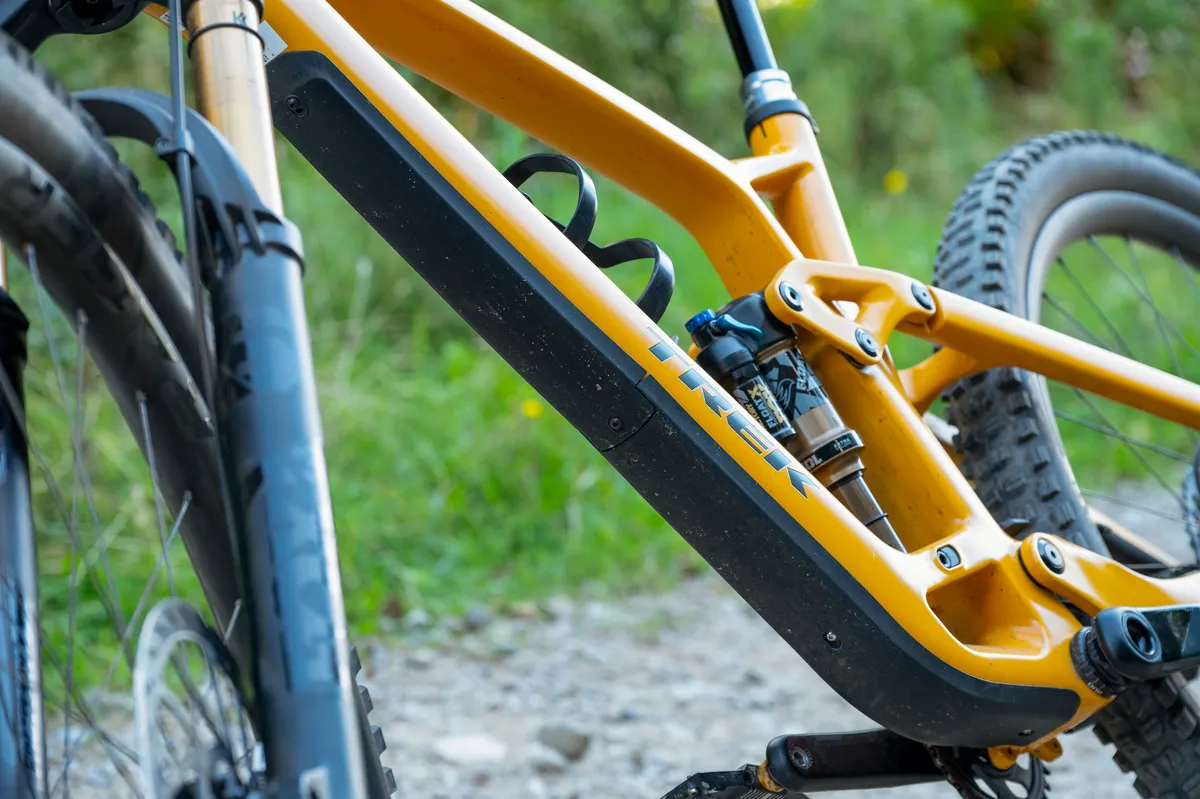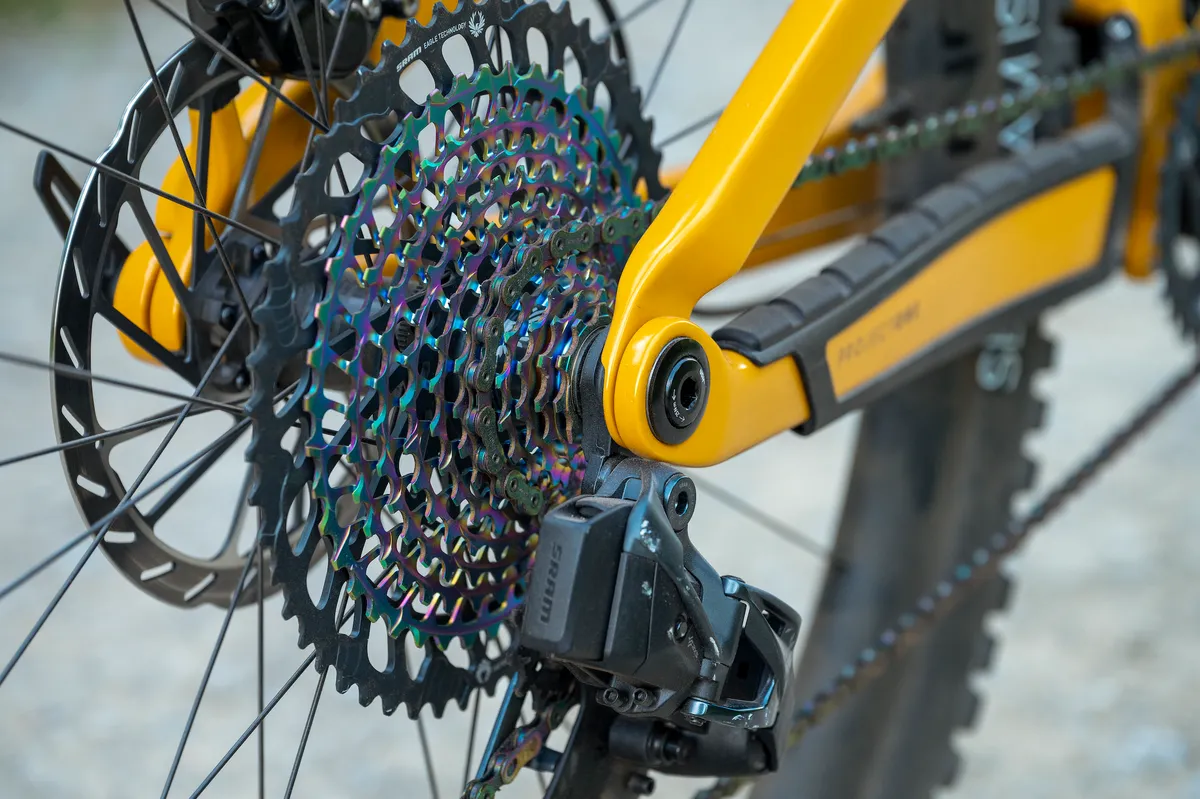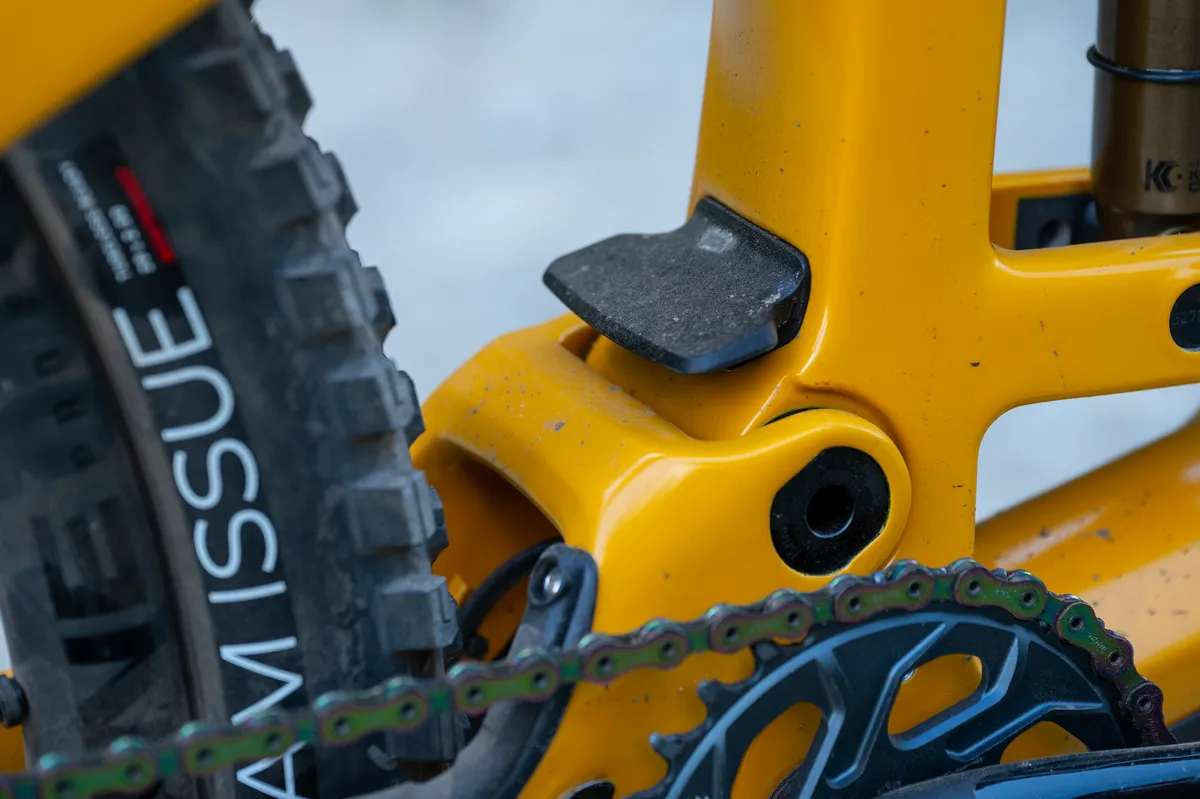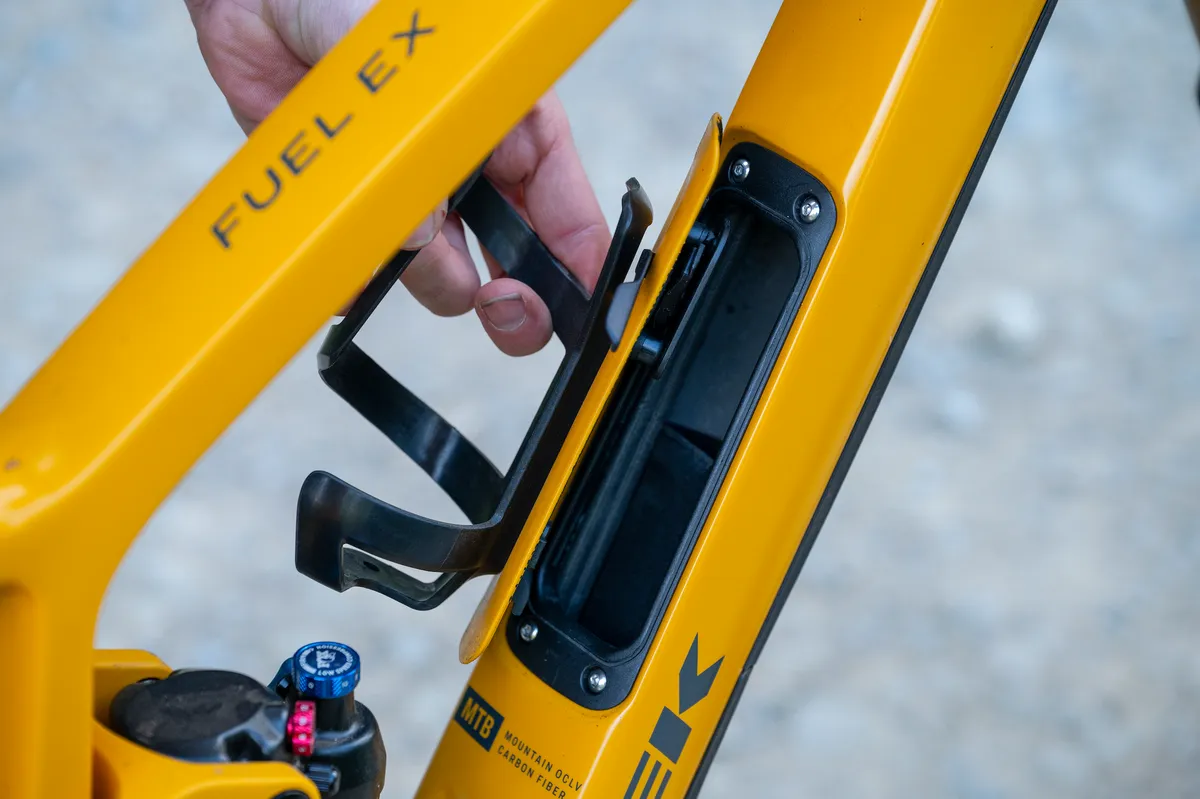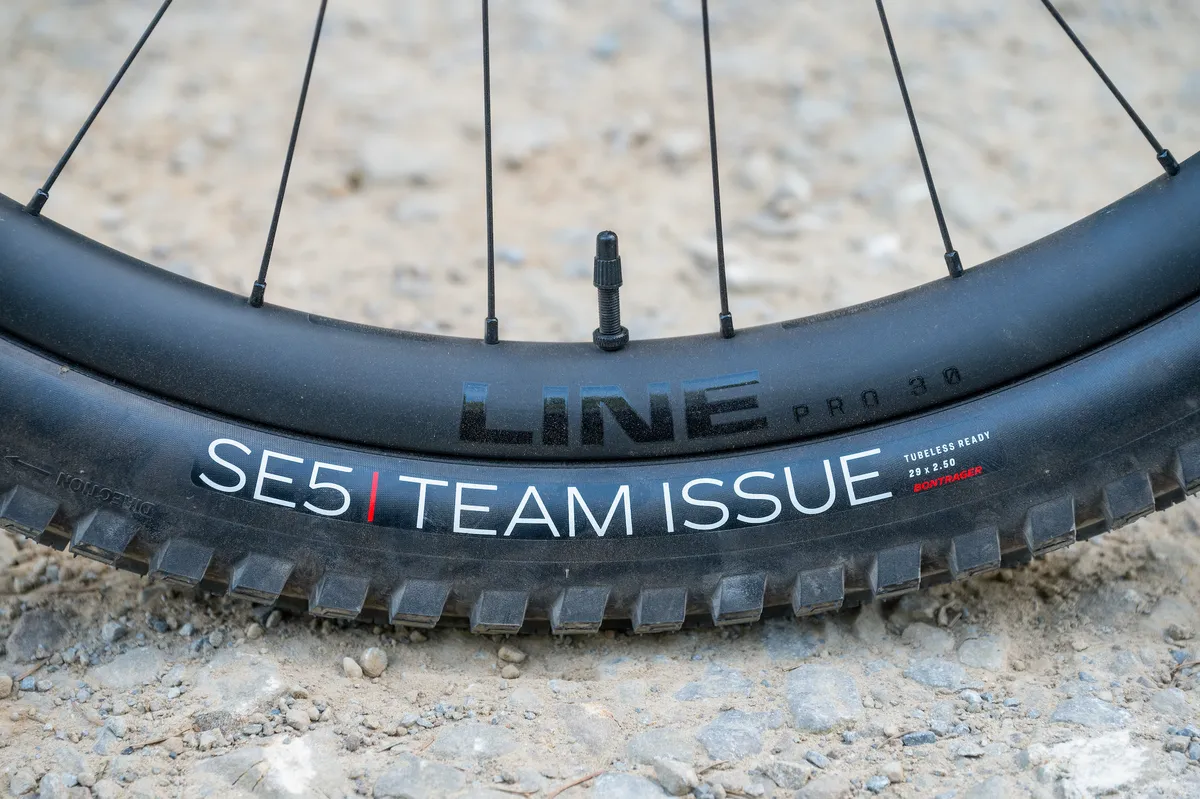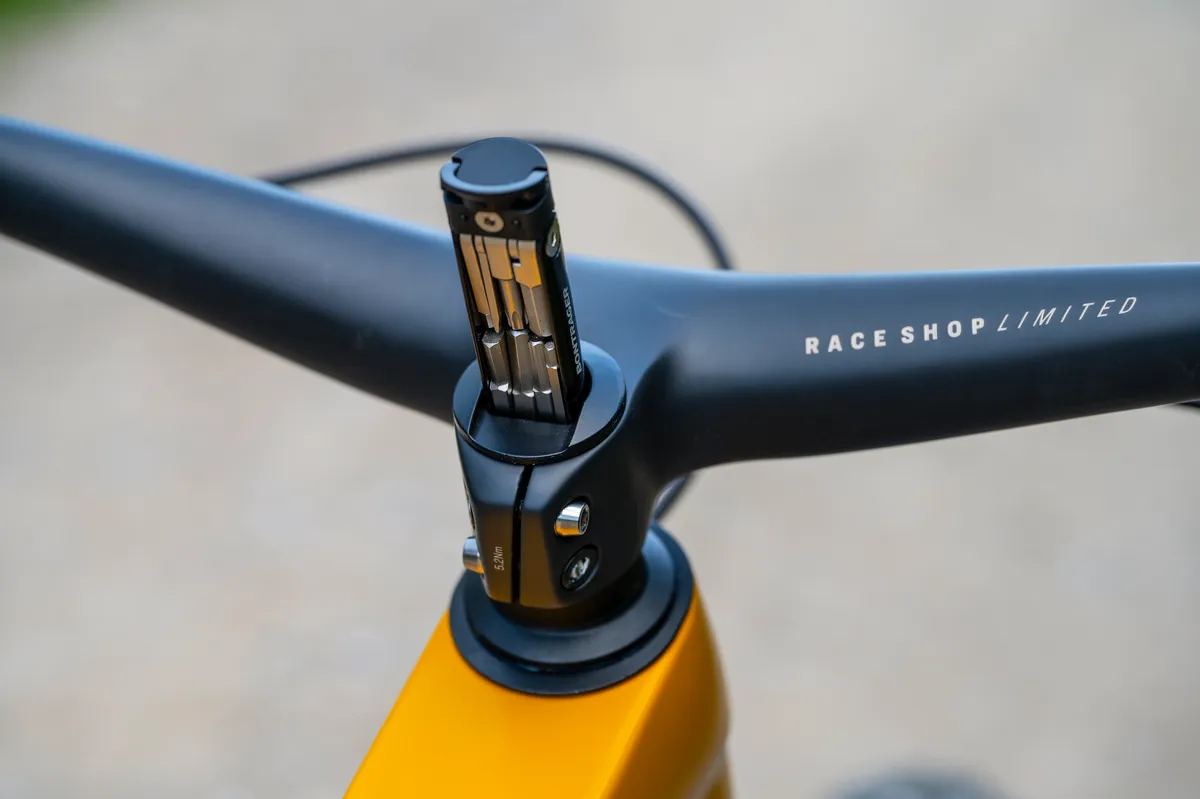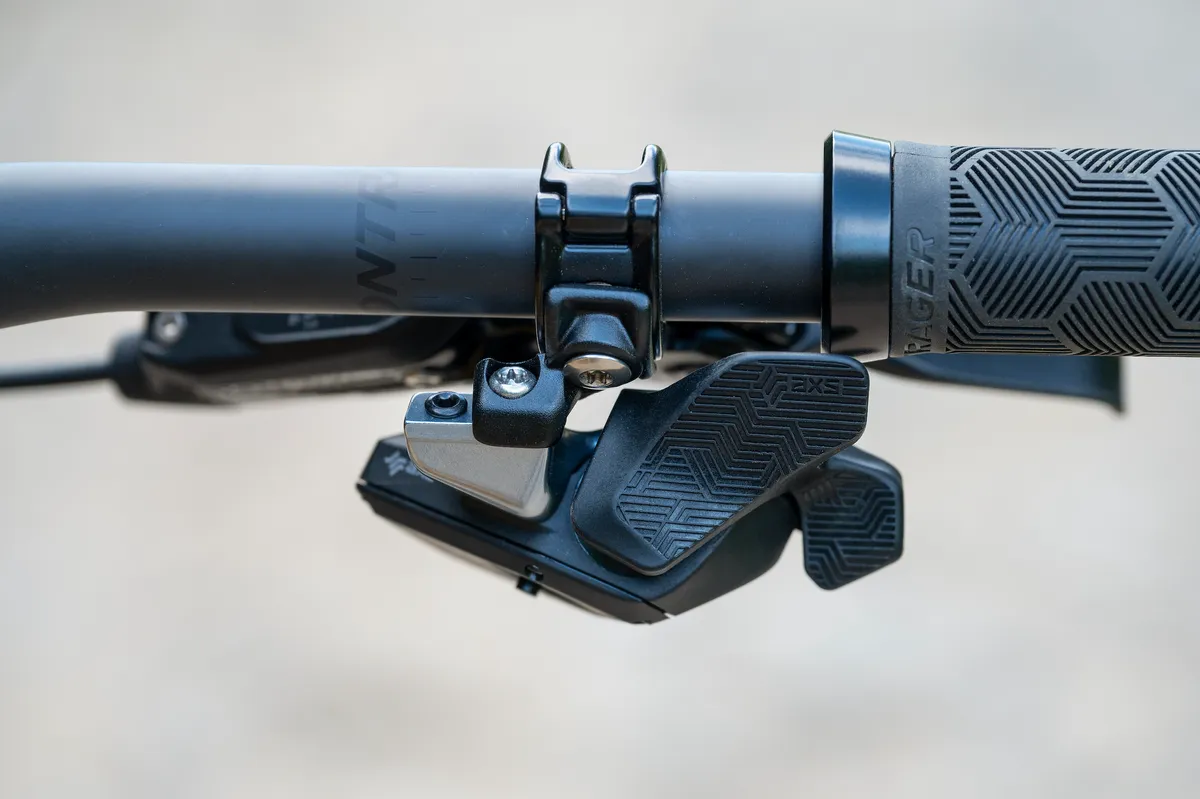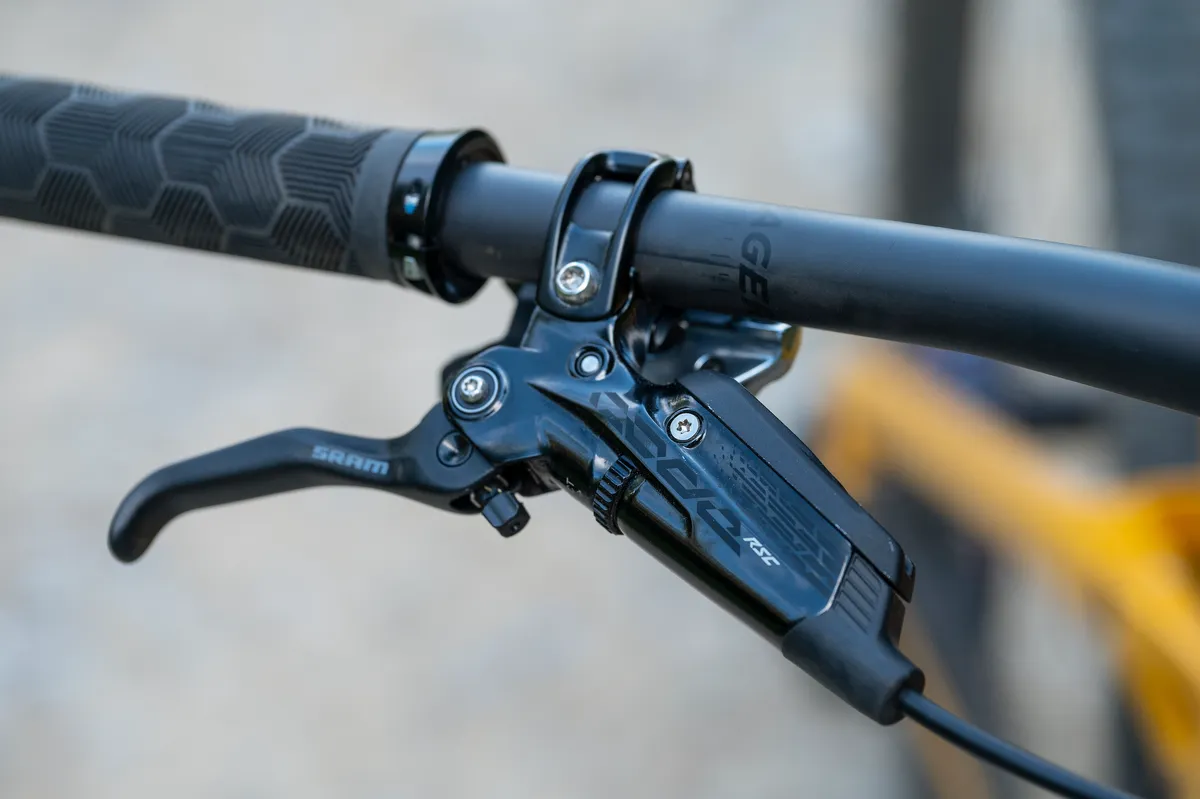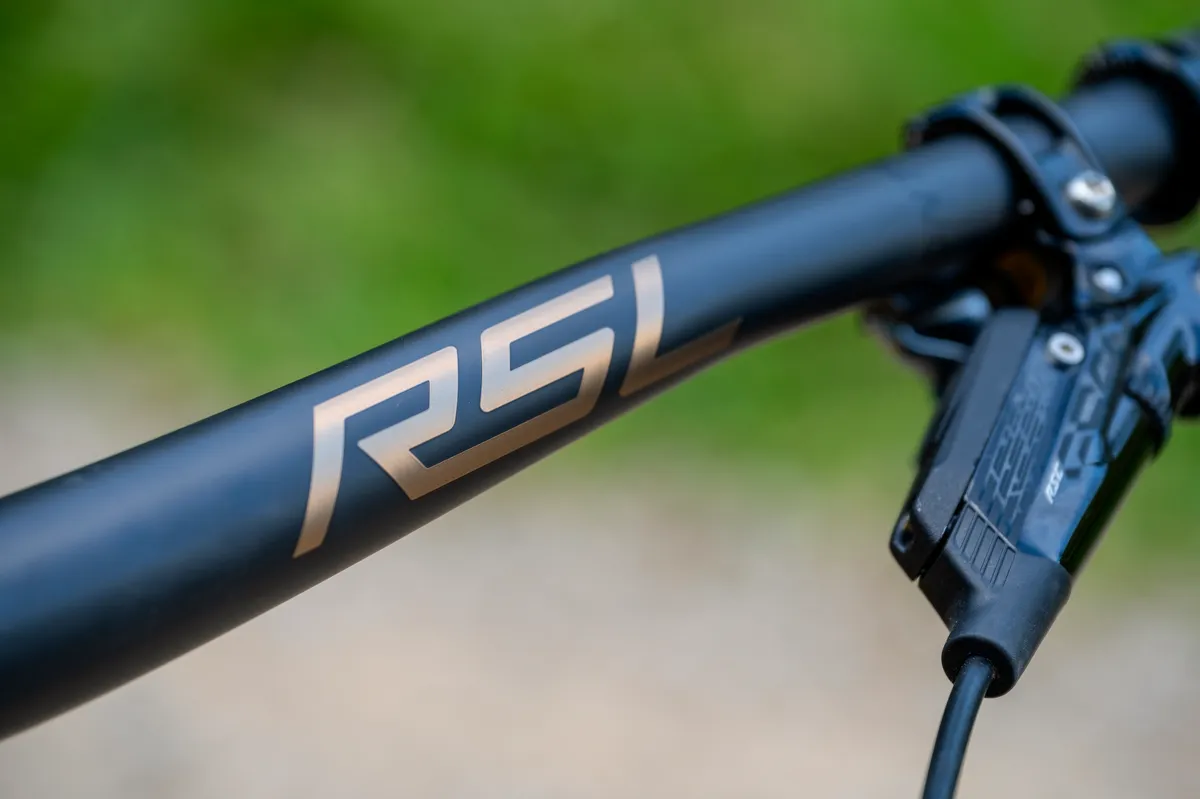Over the years, one thing has remained constant in the world of mountain bikes – the Trek Fuel EX has always been one of those benchmark bikes that others are judged against. Trek has captured the zeitgeist of what a trail bike is, but does the latest iteration continue that trend?
The latest bike has 140mm of rear-wheel travel, a burly 150mm fork paired with stout tyres and geometry that's entirely contemporary. Oh, and there's tons of customisation available when it comes to both the shape and feel of the bike. On paper, this seems like a thoroughly modern trail bike.
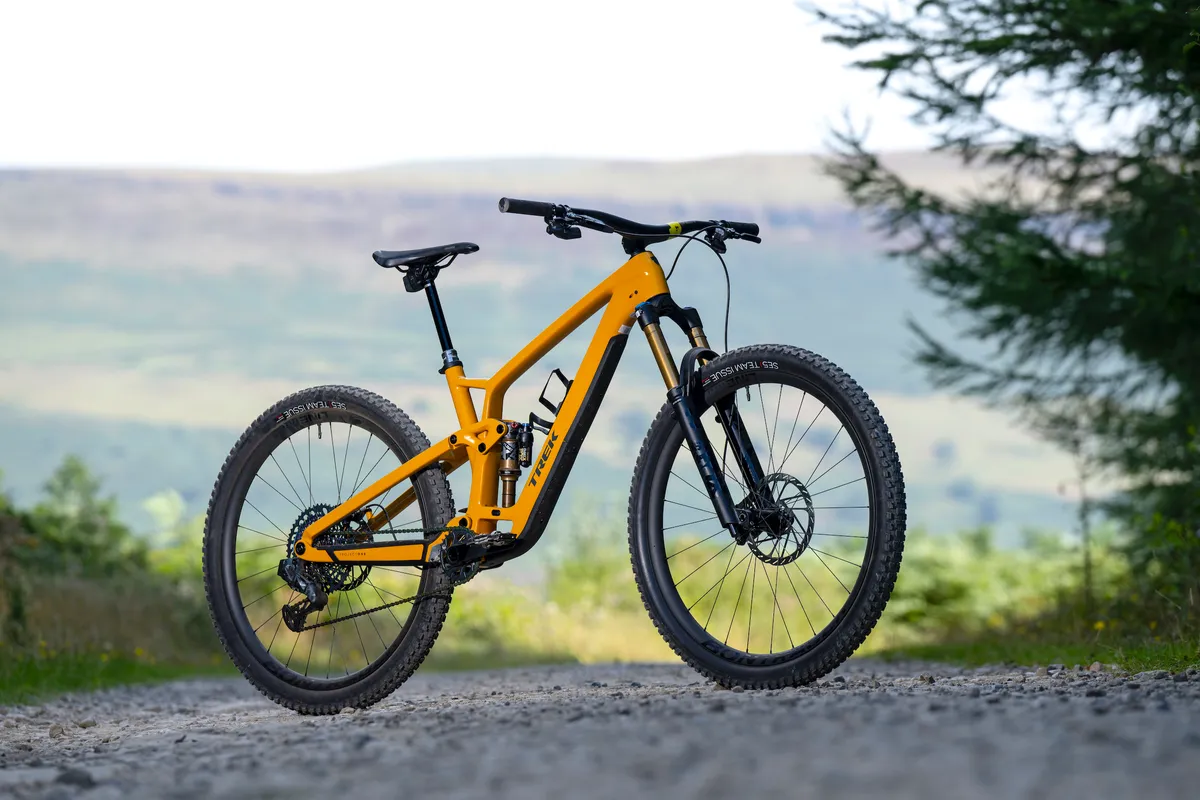
Trek Fuel EX 9.9 XX1 AXS frame details
Although aluminium versions of the bike are available, this top-of-the-range model, with its special Project One paintjob, features Trek's signature OCLV carbon construction.
All the main tubes are carbon, but the rocker link is magnesium, presumably for weight and stiffness reasons.
As you'd expect from a top-end frame, cables route internally through guided sleeves, there's a threaded bottom bracket shell, ISCG05 mounts for a chainguide, and the down tube features rubber protection all the way from the bottom bracket to the head tube.
On top of that, and continuing the theme of contemporary features, there's storage in the down tube, accessed under the bottle cage, so you can stuff your tools and tubes out of the way.
Less obvious is the move to a 34.9mm seatpost diameter. The larger-diameter tubes are better able to cope with the stresses and strains of your weight, so in theory, it should be more reliable.
While my test bike came with 29in wheels, the Fuel EX can be run as a mullet bike, with a smaller rear wheel. The XS is 27.5in only, and the S size can be purchased with either 27.5in or 29in wheels.
Trek Fuel EX 9.9 XX1 AXS geometry details
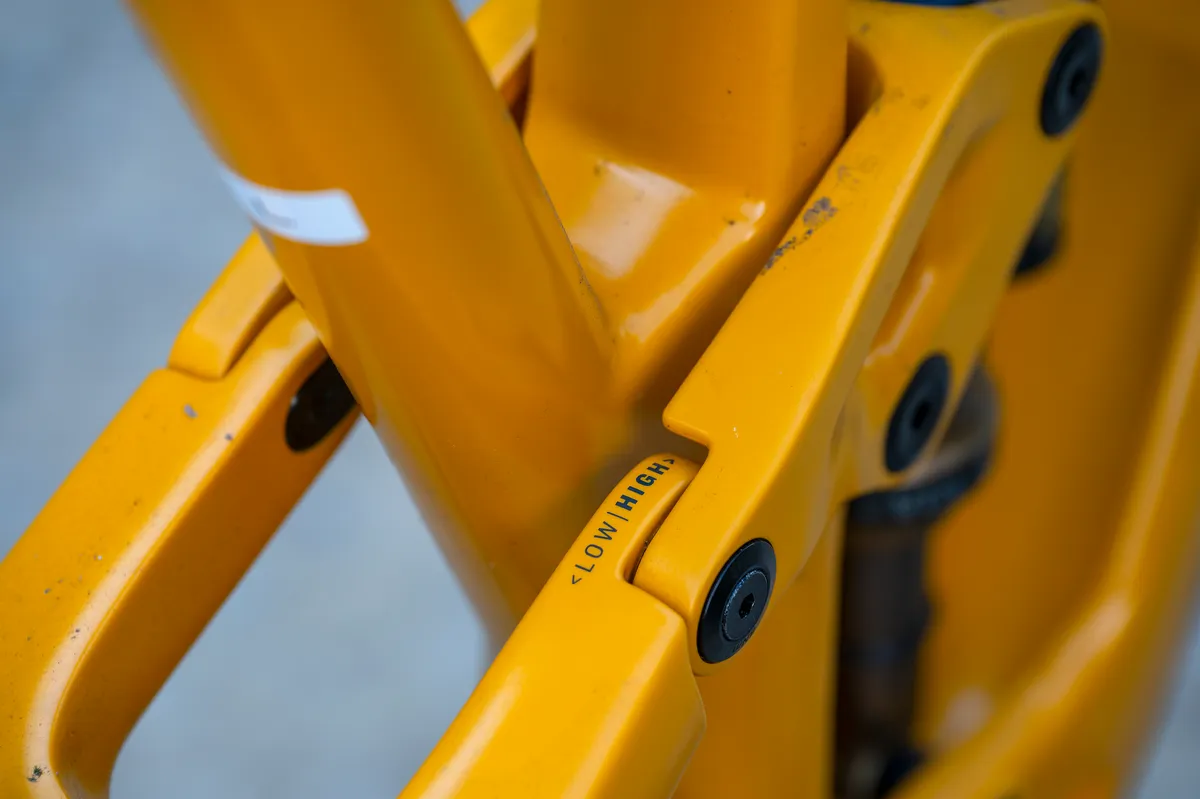
The latest Fuel EX has a modern shape, meaning longer reaches, slacker head angles and steeper seat angles.
The geometry is, however, highly configurable, with two adjustment options.
The rocker sees Trek's trademark Mino Link. This gives a Low and a High option, with the Low setting resulting in an 8mm lower bottom bracket and 0.5-degree slacker angles.
This is combined with an adjustable headset, which gives three possible head angle settings – Steep, Neutral and Slack. Adjusting this area requires aftermarket parts, however.
Add in the option to run mullet wheels, and there are plenty of ways to get the bike shaped as you like.
Bikes ship in the Low/Neutral setting and this is largely how I tested the Fuel EX. Swapping to the High setting takes a minute or so, and I have tried this setting. In further testing, I aim to swap headset cups about to further test the bike's adjustability.
Below is a geometry chart in the Low/Slack setting – as aggressive as the bike gets.
| | Wheelsize | Seat tube Length | Reach | Stack | Effective top tube | Measured top tube | Chainstay Length | Head tube angle | Head tube length | Effective seat tube angle | Bottom bracket drop | Bottom bracket height | Wheelbase | Front Center | ||
|---|---|---|---|---|---|---|---|---|---|---|---|---|---|---|---|---|
| Extra Small | 27.5 | 360 | 402.6 | 572.4 | 515.8 | 509.2 | 435.0 | 63.5 | 95 | 78.8 | 27.0 | 330.5 | 1,152.8 | 719.2 | ||
| Small | 27.5 | 380 | 432.5 | 572.3 | 550.1 | 539.1 | 435.0 | 63.5 | 95 | 78.4 | 26.9 | 330.6 | 1,182.8 | 749.1 | ||
| Small | 29 | 380 | 427.8 | 610.6 | 553.4 | 547.4 | 435.0 | 63.5 | 95 | 78.8 | 40.0 | 333.5 | 1,194.4 | 757.2 | ||
| Medium | 29 | 410 | 452.7 | 615.0 | 583.6 | 574.0 | 435.0 | 63.5 | 100 | 78.4 | 39.9 | 333.6 | 1,221.5 | 784.4 | ||
| Medium/Large | 29 | 420 | 472.7 | 614.9 | 606.9 | 594.0 | 440.0 | 63.5 | 100 | 77.7 | 39.9 | 333.6 | 1,241.5 | 804.3 | ||
| Large | 29 | 435 | 487.7 | 619.4 | 626.3 | 610.5 | 440.0 | 63.5 | 105 | 77.4 | 39.9 | 333.6 | 1,258.7 | 821.5 | ||
| Extra Large | 29 | 470 | 517.7 | 632.9 | 661.2 | 645.2 | 445.0 | 63.5 | 120 | 76.8 | 39.8 | 333.7 | 1,295.2 | 857.9 | ||
| XX-Large | 29 | 500 | 547.7 | 646.4 | 695.9 | 679.9 | 450.0 | 63.5 | 135 | 76.2 | 39.8 | 333.7 | 1,331.6 | 894.3 |
Trek Fuel EX 9.9 XX1 AXS suspension details

A Fox 36 Factory fork sits up front on this model of the bike, with 150mm of travel.
I usually run Fox suspension fully open, because I tend to find the forks a little over-damped for my preferences. However on steeper, smoother woodland tracks I added three to four clicks of low-speed compression damping to give me a little more to push against.
Rebound was set fairly open too, with both high- and low-speed rebound dials pretty much left open, as per my preference.
At the back, 140mm of travel is controlled by a Fox Float X shock. As per the fork, I ran it pretty fast, adding just a couple of clicks of rebound damping.
I experimented with adding four to five clicks of compression damping too. It worked well on smoother tracks, but I preferred the feeling of an almost fully open shock on the majority of my trails.

Much like with the geometry, there's adjustability here. Two shock lower mounting points can be used, to give more linear or more progressive spring rates.
While air shock users can employ this to fine-tune the feel, the major benefit is the frame can take a coil shock (one would opt for the more progressive shock mounting point in this case).
Trek uses its ABP suspension linkage on the frame. Its rear pivot is located concentric to the rear axle, which is said to help isolate braking forces from the suspension.
Trek Fuel EX 9.9 XX1 AXS specification details
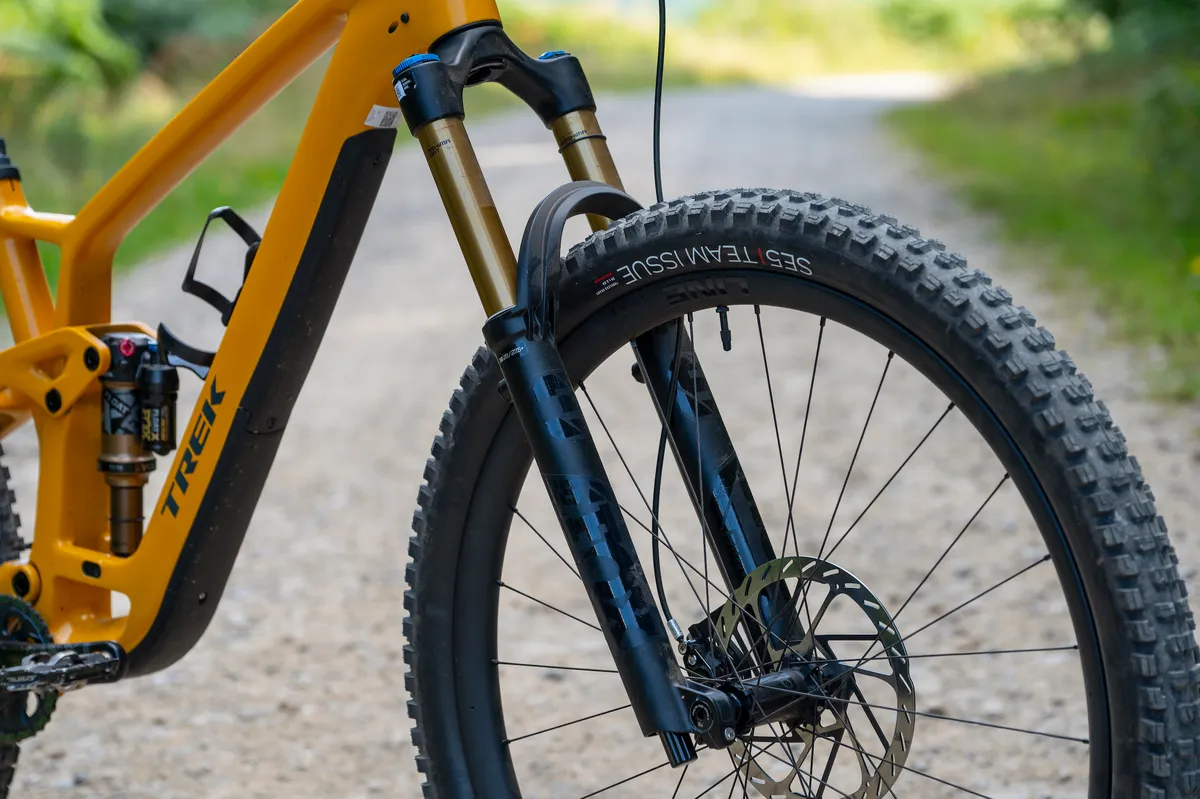
The name of the bike gives big clues to its spec. There's a SRAM XX1 AXS drivetrain paired with a Reverb AXS dropper post.
Fox Factory level suspension is utilised, while Bontrager's own carbon wheels are shod in the brand's top-line SE5 trail tyres. Bontrager also provides the very fancy RSL integrated bar/stem system.
SRAM's Code RSC brakes bring the bike to a halt.
Trek Fuel EX 9.9 XX1 AXS ride impressions
These ride impressions are based on just a few rides on my local trails.
As yet, I've not had a chance to take the bike to any particularly rocky, or super-rough tracks. Most of the riding has been done in the woods, on steep, technical, rooty tracks, or faster and flowy trails.
I intend to spend much more time on the bike in the coming months to give a more detailed review.
Trek Fuel EX 9.9 XX1 AXS climbing performance
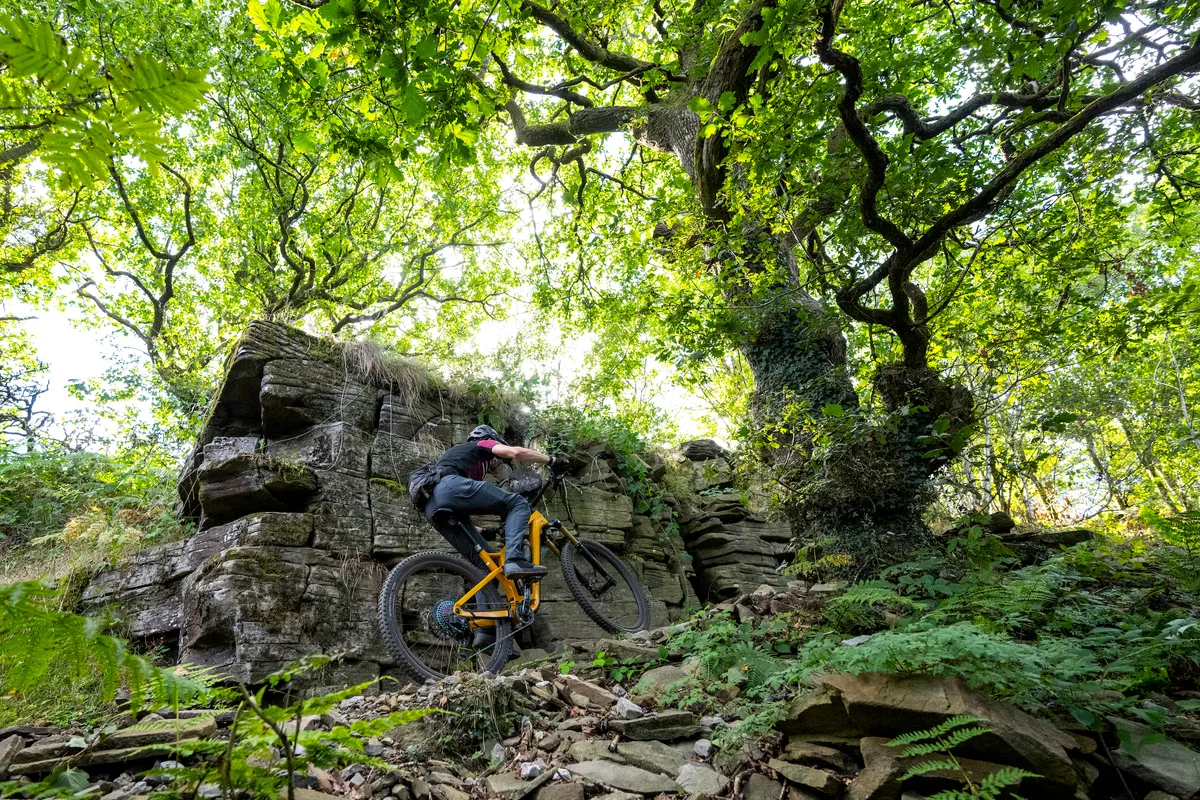
The Fuel EX is set up to climb competently, however I don't see many KOMs in my trail-riding future on this particular bike.
While some trail bikes feel light and sprightly, the Fuel EX has a very planted feeling on climbs. The tyres are soft in compound, and thus drag on smoother surfaces.
The suspension is supple too, and while the bike doesn't sag and wallow drunkenly, it doesn't have lightning-fast reactions to pedal inputs.
The shock's lockout lever is within easy reach, though, and so on longer, smoother drags I often reached down to give it a quick flick.
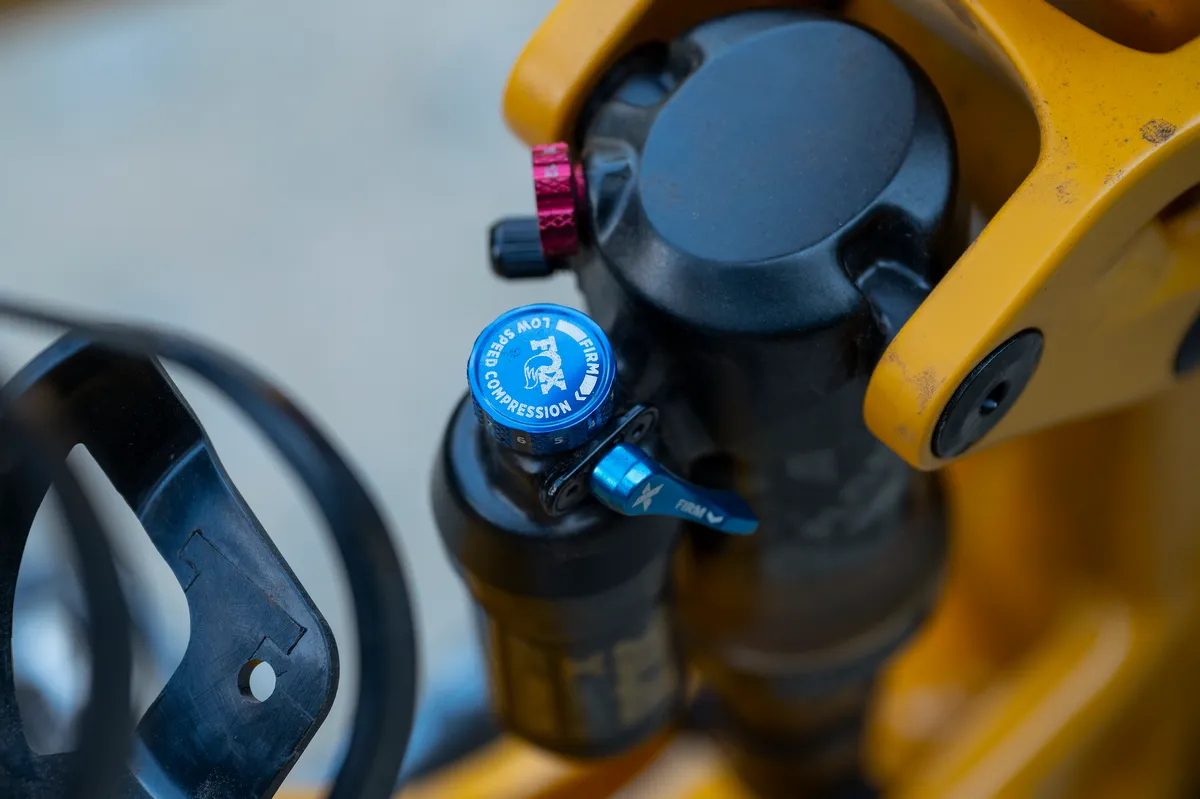
This sounds like a negative assessment. However, this bike will still get to the top of climbs with minimal fuss – you just might not set records doing so.
Traction is excellent, as is the pedalling position over the cranks. As such, on steep, loose and technical climbs, I've so far found the Fuel EX to be incredibly capable.
It's also a comfortable place to sit and spin on long ascents, thanks in part to that steeper seat angle.
Standing out of the saddle does incur some pedal bob, as you'd expect, but it feels as though it reaches a natural platform in the upper-mid stroke, and so it doesn't turn into a mushy mess when you're really putting down the power.
Trek Fuel EX 9.9 XX1 AXS descending performance
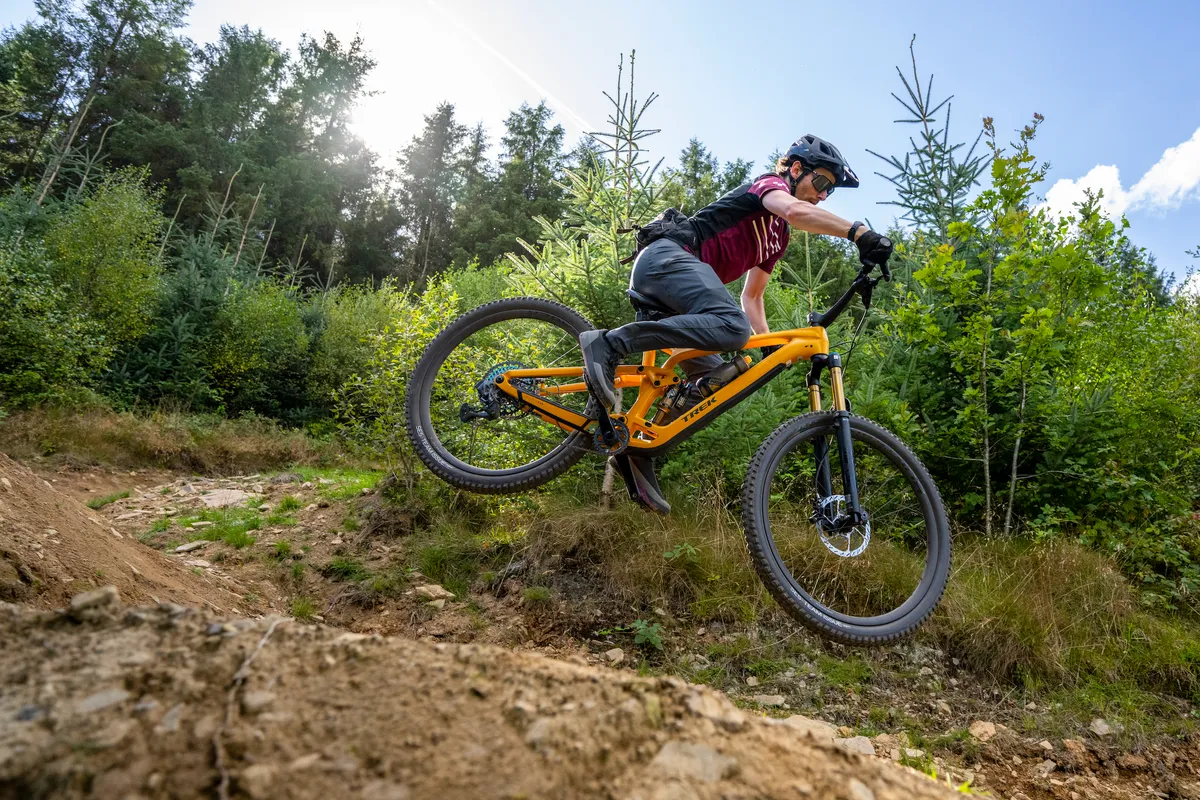
On the trail, the immediate feeling is this bike is planted to the ground.
The chassis is stiff – not in an uncomfortable, sketchy-over-off-camber way, but in a reassuringly solid manner. Lean the bike over and weight through the cranks, and it doesn't fold in half. You can really aggressively push and pull the bike around, and doing so seems to get the most out of the chassis.
As such, the Fuel EX is a bike that rewards an aggressive, rather than passive, rider.
The suspension is excellent. The upper portion of the suspension travel readily deals with trail flutter, while you can push into the bike's mid stroke to gain speed out of a corner or get extra boost off a lip.
Rattle it over matted roots and rocks and the Fuel EX manages to stay high enough in its travel to be composed, without feeling harsh or unsettled.
While I've not experienced many big hits thus far, despite reaching the lower reaches of the travel, I haven't felt a harsh bottom-out, suggesting late-stroke progression is good.Trek has got the geometry spot-on in my book. The Fuel EX is long enough to feel confident on high-speed trails and steep sections alike.
As yet, I haven't felt the bike getting bucked and 'squirrely', nor have I felt as if I might get chucked out of the front.
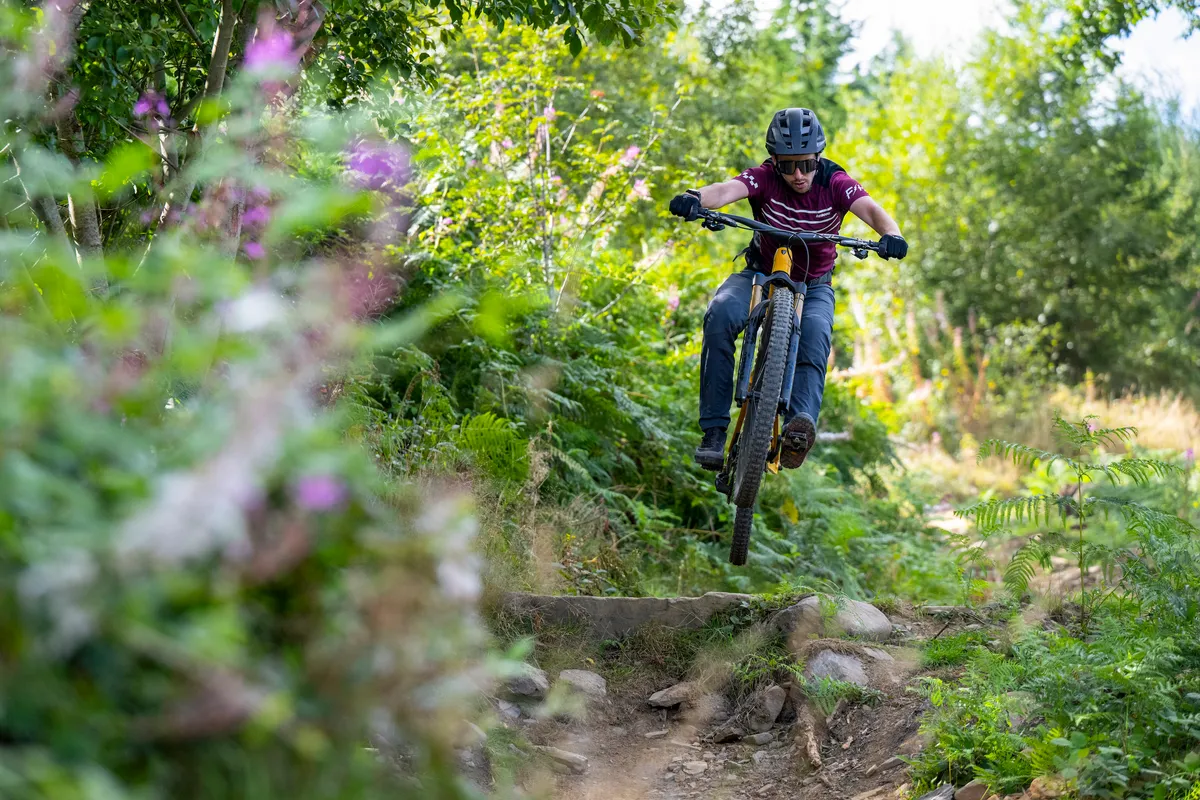
The BB is fairly low, especially in the Low setting, and so weighting the outside foot in order to help the tyres carve a corner is easy to achieve.
That's handy, though, because such situations reveal the bike's biggest weakness (so far) – its tyres.
The SE5 has a decent compound and good volume, but I've found there's a big gap between the central and shoulder tread, with a bit of a no-man's land in between. The bike needs to be properly leant over to get the shoulder treads engaged in the dirt.
And, when they are, I and my BikeRadar colleagues have found the shoulder lets go that little bit too easily and suddenly.
This is most noticeable when riding the Trek back to back with another very similar test bike equipped with a Maxxis Minion DHF front tyre, which gave a much more confident bite into dirt.
The other potential issue is the use of a combined bar and stem. It looks fantastic, but this is an area critical for fine-tuning a bike's fit and feel, and so with no ability to roll the bars back and forth, you're stuck with the stock geometry of the cockpit.
Trek Fuel EX 9.9 XX1 AXS bottom line
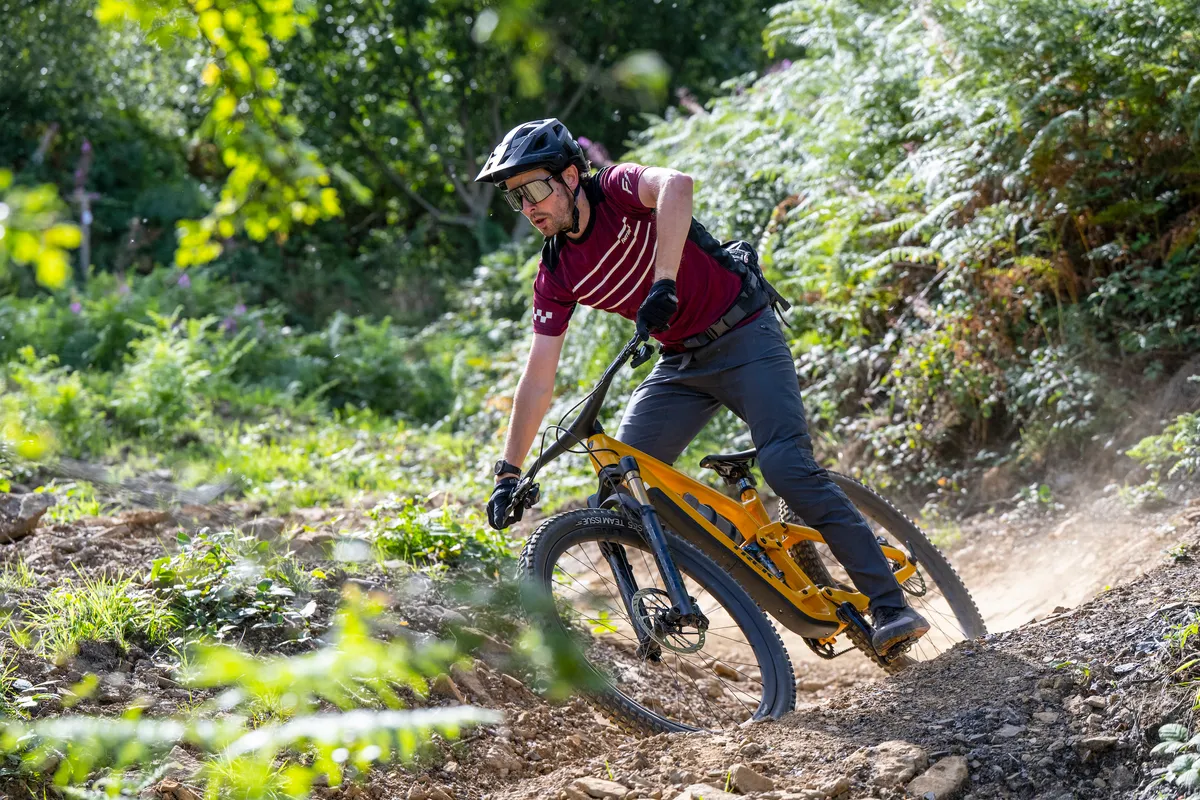
The Fuel EX delivers excellent geometry with impressive suspension performance, along with a solid feel through the frame.
This all adds up to a bike that’s seriously confident when belting down the trail at speed and, at times, maybe even lifts confidence levels to enduro bike heights.
That said, while it’s more than a competent climber, the Fuel EX doesn’t feel as sprightly as some when pointed uphill. That’s not to say it’s slow, it’s just not as energetic as some of it’s closest rivals.
This isn’t a big criticism, though, because I’d happily ditch those KOMs up the hill in favour of those riding back down. And here, the Fuel EX really feels as though it can deliver.
Product
| Brand | trek |
| Price | 15999.99 AUD,12999.00 EUR,11750.00 GBP,10749.99 USD |
| Weight | 14.7400, KILOGRAM (Large) - |
Features
| Fork | Fox Factory 36 |
| br_chain | SRAM XX1 Eagle |
| br_frame | OCLV Mountain Carbon |
| Tyres | Bontrager SE5 Team Issue 2.5" |
| br_brakes | SRAM Code RSC 4-piston hydraulic disc |
| br_cranks | SRAM XX1 Eagle, DUB, 30T |
| br_saddle | Bontrager Arvada |
| br_wheels | Bontrager Line Pro 30, |
| br_shifter | SRAM XX1 Eagle AXS |
| br_cassette | SRAM Eagle XG-1299 |
| br_seatpost | RockShox Reverb AXS |
| br_handlebar | Bontrager RSL Integrated handlebar/stem |
| br_rearShock | Fox Factory Float X |
| br_bottomBracket | SRAM DUB |
| br_rearDerailleur | SRAM XX1 Eagle AXS |
